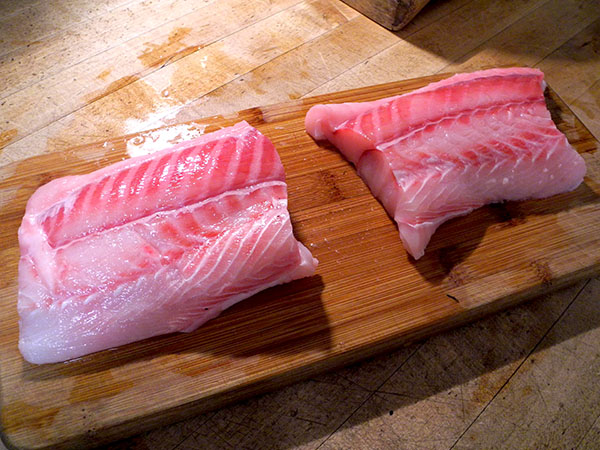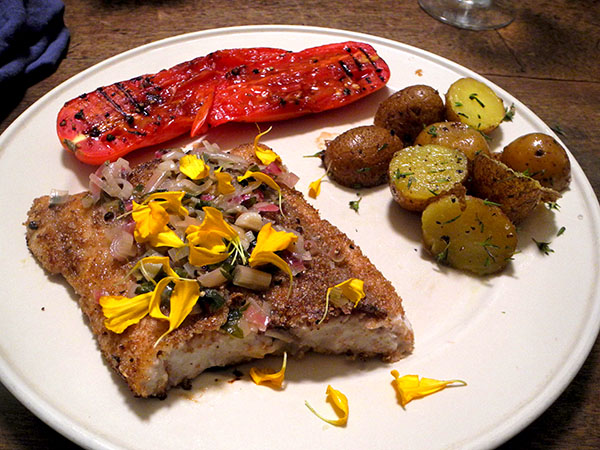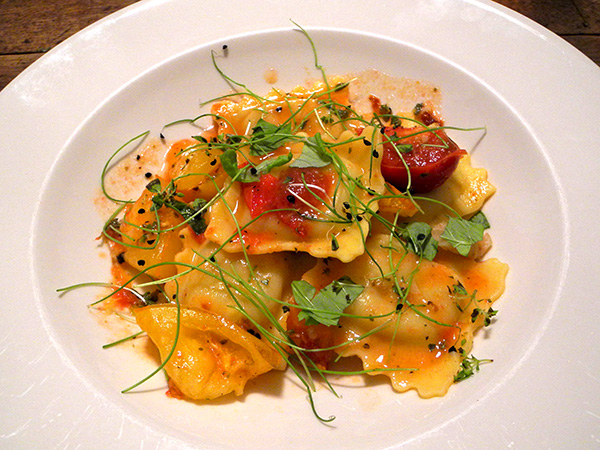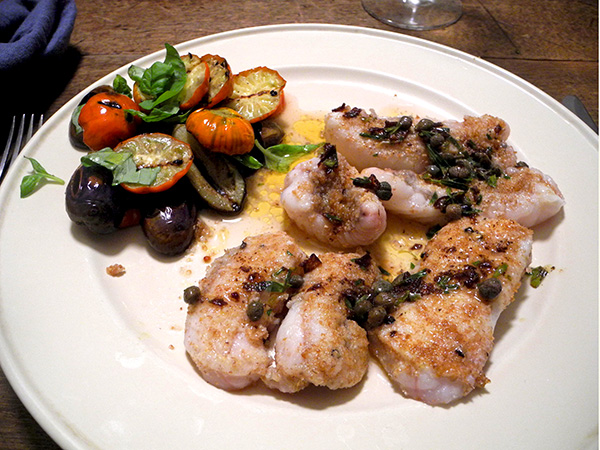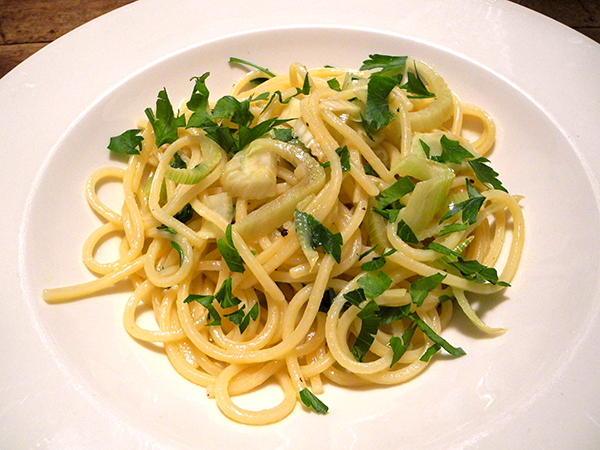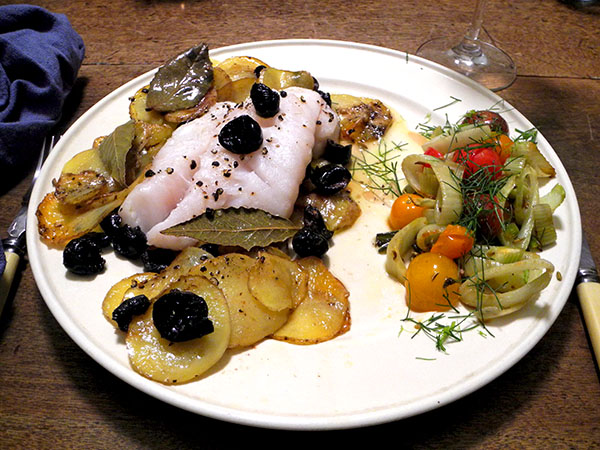
Normally this would not be a meal we could enjoy in the summer, although it’s a meal we always enjoy a lot. Last night the air was relatively cool, and remembering that it’s a recipe Barry likes to call ‘comfort food’, I decided to sneak it into the last week of July.
There were potatoes,
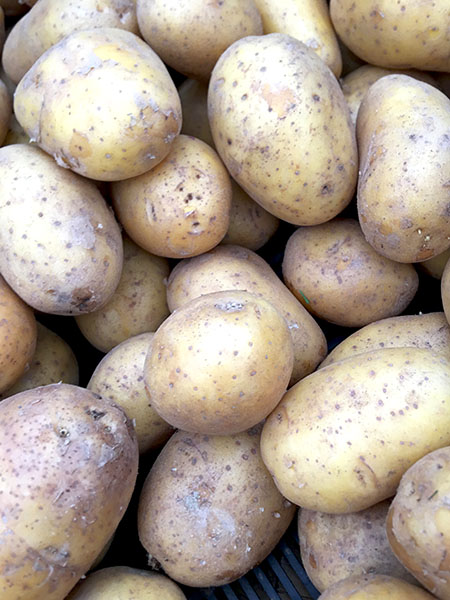
and, in a side dish more seasonal than the entrée, excellent fennel,
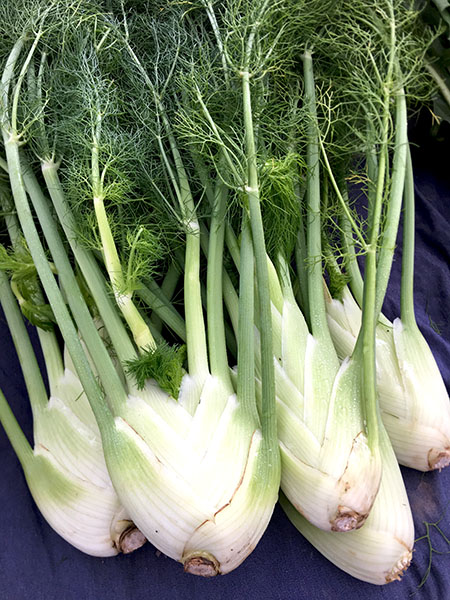
and some beautiful tomatoes.

- One 15-ounce hake fillet from American Pride Seafood in Chelsea’s Down to Earth Farmers Market on 23rd Street, prepared accordingt to a Mark Bittman recipe I found in the New York Times in 1999 [although I always use only about two thirds of the amount of olive oil it suggests], last night using these other ingredients: ‘yellow potatoes from from N.J. Jersey Farm Produce, Inc., also from the 23rd Street market; black oil-cured olives and 15 Sicilian bay leaves, both from Buon Italia
- one small fennel bulb from Alewife Farm, stems and fronds removed (the stems and most of the fronds kept for another use, some of the fronds set aside, sliced about one quarter of an inch thick crosswise, and 3 roughly-chopped fresh spring shallots, also from Alewife Farm, one crushed section of a dried golden/orange habanada pepper, and a teaspoon of Italian fennel seeds, sautéed inside a heavy high-sided tin-lined copper pan over medium high heat until the fennel had just begun to color, the heat lowered, the pan covered, the vegetables cooked for another 4 or 5 minutes, the cover removed and 7 or 8 mixed multi-colored cherry and baby plum tomatoes from Eckerton Hill Farm, halved, added, stirred, anad allowed to soften just a bit, the pan set aside until the hake was ready, divided onto the plates and garnished with the chopped fronds of the fennel
- the wine was a California (Andrus, in the Sacramento-San Joaquin River Delta) white, Jacqueline Bahue Albarino Gomes Vineyard California 2016, from Naked Wines
- the music was the album, ‘Henricus Isaac: Nel tempo di Lorenzo de Medici & Maximilian I‘, music from the Medici and Austrian Habsburg courts, by the late 15th-century Flemish composer, performed by Jordi Savall, La Capella Real de Catalunya, and Hesperion XXI
